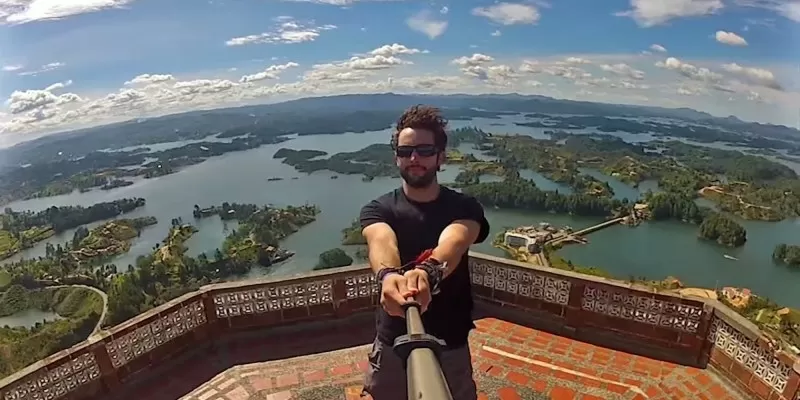One of the big smartphone trends last year was the "selfie" phone. HTC, Nokia, Sony, Huawei and many others all had at least one device marketed towards that purpose.
I suspect that my initial reaction went like many of yours: scoffing dismissal. However, I'm now a convert and completely understand why this market might actually be large.
Sure, apps like Snapchat and Bolt encourage quick shots as ways of communicating, so the front facing camera is more valuable.
But it goes beyond that, and it all comes down to this one tool: the selfie stick.

In case you've been in hideout for the past year or two, the selfie stick is a simple tool where you can attach your phone to one end, extend the stick out and have the camera countdown to take a photo. So instead of asking strangers to take photos of you (and your group), you can easily do it yourself with the stick.
I've been away for the holidays with my girlfriend and she absolutely loves it. We're in Japan, where the stick is not yet commonplace, and we get a lot of people staring. I'm pretty sure most of them want one, too.
I snigger as much as the next guy when it comes to selfie-crazed behavior, but it's a different thing when you're on vacation. You don't just want a pic of the temple, you want the pic of the temple with you in it.
You want to be in the photos, and asking strangers who don't speak your language to take one for you is a major pain. The selfie stick solves this problem.

We took a ton of photos this way, to the point where we probably took more photos with the front facing camera than with the main one. It flips the typical camera phone use case on its head. At this point I wished our iPhone 6 Plus' front facing camera was better.
The selfie stick craze is sweeping through at least China and South East Asia. If it hasn't hit your region yet, trust me, it will. Once it does, you're going to start paying more attention to whether your next phone has a good front facing camera. Or buy a GoPro.